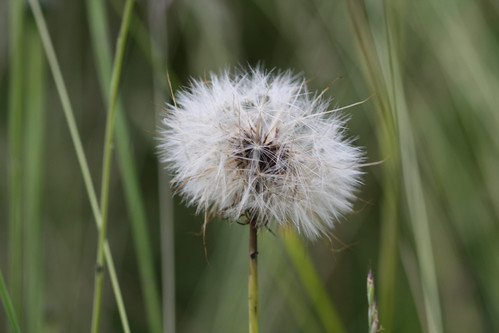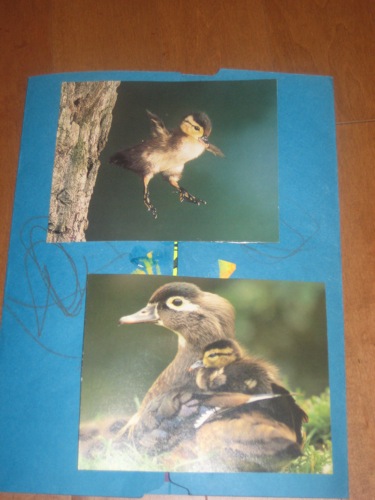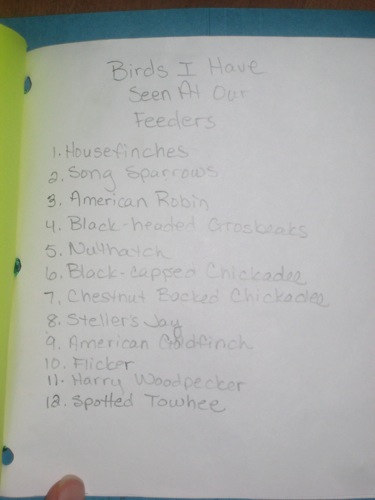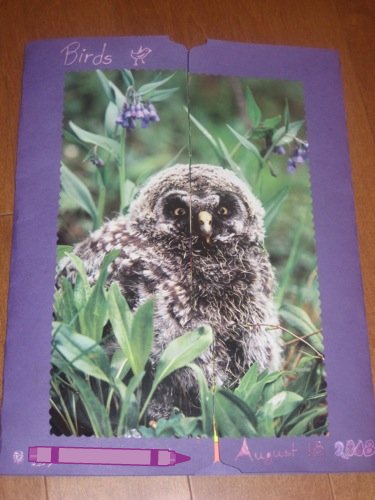This is just a fun video of the boys doing an experiment from the Young Explorer Series Exploring Creation with Zoology 1 book.
If you are curious about the experiment, I guess, you’ll have to get the book.
Preparing for higher education in the school above.
This is just a fun video of the boys doing an experiment from the Young Explorer Series Exploring Creation with Zoology 1 book.
If you are curious about the experiment, I guess, you’ll have to get the book.
We have been studying the Bible story of Creation for our Bible class, both from the Bible and from the book Patriarchs and Prophets. So I thought that it would be fun to visit a Creation Museum to confirm some of what we were studying. When my children were very little, my husband and I visited a Creation museum that is located at the base of Mount Saint Helens called the 7 Wonders Creation Museum. We called some of our homeschool friends and arranged a fun trip to the museum and the volcano. (I was the sole adult with eight kids! Call me brave! Not really, they are all really great kids and one of them was a very responsible 16 year old, so I had good help.)
At the 7 Wonders Museum, we were privileged with a lecture/PowerPoint show on different aspects of Mt. St. Helens that defy evolution. Because most of our group was kids, he limited it to three wonders, but in his normal presentation, he presents seven wonders–hence the name of the museum.
After that, the tour guide from the museum took us on a tour up to the volcano. First we stopped by the A-Frame that has been buried in mud. This A-frame was partially buried by the river of mud that came flowing through the valley about eight hours after the big eruption. You now, stand on the ground and look down on to the deck of the A-frame. It is quite a testament to how quickly the landscape can be changed. Here is a picture that one of the kids took.
Then we went to the top of a dam that was built for the sole purpose of holding back mud, in an effort to save some of the cities that are downstream from the volcano. This provided another evidence that changes can happen rapidly, but also continue after catastrophes. Still, major changes that happen in a matter of months are pretty rapid as compared to millions of years.
Here are a couple pictures of the dam.
Then we drove up to the Johnston Ridge Observatory that looks straight into the volcano. It is quite amazing to look face to face at a volcano. At the observatory, we attended a Ranger talk, watched the movie and all the kids worked on and earned their Junior Ranger Badges. We had one young lady with us, who spoke primarily Japanese, and we were happy to find out that we could sign up for a translator for her, so she could listen to translations of all the signs in the exhibit. They have the translators for several languages. The rest of us were a little jealous, because the little device that she used was kind of fun to play with.
If you ever have a chance to visit Mt. St. Helens and the observatory, do not miss out on the movie. I wouldn’t want to spoil the surprise that comes in the movie, but it is amazing. I also highly recommend the museum, but only if you call ahead. The museum is run by a man and his wife and if you call ahead, they will schedule to give their “Seven Wonders” lecture, otherwise, it is small and you won’t get near as much out of it.
I met a man on the airplane a few days before we were planning to go to Mount Saint Helens who got into a discussion with me about Young Earth Creationism. He was a Christian, but just believed that the facts of science were too compelling to accept the Biblical rendition of Creation. I sure wished that I could have taken him with me to St. Helens. He might have got a new perspective. I did my best to help him have a new perspective, but I’m not sure how much headway, I made. Now I have a little more in my arsenal for the next time I have such a discussion.
The first lesson of the Exploring Creation with Botany is all about taxonomy. This seemed like a difficult concept for young children to understand, but fortunately a couple of pictures in the book spurred my kids on. My daughter set up a chart with the taxonomy of her closest. For example kingdom: shirts phylum: short-sleeve order: button-up. She had fun with this.
JD Boy classified G’tums’ Duplo blocks.
So what I thought would be quite a boring subject for my youngsters turned into quite a fun activity and even my three-year old enjoyed joining in. I have to say this gave me a good first impression of the Botany book. When something dry is turned into fun, my children giggle and I smile.
The next day after they learned the concept of taxonomy, they enjoyed learning about the first two terms: vascular and non-vascular. But they got a bit bogged down the following day when we hit angiosperm, gymnosperm, Anthophyta, Bryophyta, etc. Maybe I went too fast on that part. Maybe if we’d done one term per sitting/day and a nature walk to find that kind of plant, then maybe all would have been well. But we did four terms and then went for a nature walk to find them and they were getting confused which "phyta" was which. By the time we were done with this lesson, my daughter was hanging upside down on her chair saying "This is boring." Oh no, I hope I didn’t strike out.
The kids did enjoy finding the things that we had read about. Here are the things that they found. We’re only going to name the phylum, not the plant, since that is what we were studying.
Anthophyta: all flowering plants.

Coniferophtya: all cone producing plants.
I don’t know if that cone belonged to that tree. Zippy just thought they made a nice picture together.
Pteraphyta: Seedless vascular plants–ferns.
A shot of the spores on the fern (and my personal favorite shot of the day.)
Bryophyta: moss
We’ve been busy making entries in the Botany Notebooking Journal, while we’ve been studying.
Left is JD Boy’s dried leaf and his moss drawing. Right is Zippy’s drawings for angiosperm and gymnosperm.
Next we’re off to plant some seeds. I’ll keep you posted.
My kids have been wanting to do this project ever since we studied about the Human Body in January and February. We moved on to other things, so I thought maybe we would forget it; but they kept reminding me, so we did it. It doesn’t necessarily tie in with anything we are studying right now, but it was fun anyway. Even I thought it was fun. And it was a great review to see how much they (and I) remembered from our studies a few months ago.
I traced the kids’ bodies out on butcher paper and cut them out, then we printed the organs and body parts out on construction paper and cut them out and attached them with brads and with glue. All of the body parts were printed from the My Body book.
“See what the inside of me looks like!”
We were so busy during the Children’s Bible Class that I posted about before, that we had a hard time keeping up with everything. So one morning I said to the kids, let’s do something on a preschool level that we would all enjoy. John Deere Boy came up with this idea and it was a hit–learn about Penguins. We had already seen the Easy Make & Learn: Penguin book, so I knew that there was some great printouts that we could use for a lapbook and other fun projects. So we picked up a couple of really great DVD’s and wala we had a short unit study that was stress free for mama!! Sometimes that really comes in helpful. So if you’re ever looking for a fun, short, easy unit that all ages will enjoy, this was a great one.
A very happy boy showing off his first lapbook! Each of the kids colored one of the penguins on the front and they plastered the lapbook with stickers. I thought that was the part my three-year-old would get into. Well, of course, he did, but so did the other two. This lapbook was actually a team effort by the three of them. He needed help so we helped him out.
Here are all of my kiddoes with their penguin masks and lapbook and, of course, the stuffed penguin. Now if you could just see them waddle too!
The really interesting videos that we all enjoyed about Penguins were: March of the Penguins, Nature: Waddlers & Paddlers and Life in the Freezer. All of these were very good and interesting. They appealed to all the ages in our home 3 – 32. None of them are from a Creationist perspective though, so you have to weed out some stuff. We’ve got our kids well trained at this point on that subject. Whenever they hear the words “millions” or “billions” they shout “Wrong!”
We didn’t read any books on the subject. Did I say I was busy? We watched videos and they worked on their lapbook while I made lunch. We were squeezing school in here and there!
We have been studying about the human body for several weeks. Our core book or spine has been the book The House We Live In. It is an older book (written in early 1900’s) that includes information not only about the body but how to keep it healthy. I really appreciated this approach. We have an amazing machine called our body and keeping it in good running condition is so very important.
Here is a quote from the back of that book that I thought was good: “Parents should seek to awaken in their children an interest in the study of physiology. From the first dawn of reason the human mind should become intelligent in regard to the physical structure. We may behold and admire the work of God in the natural world, but the human habitation is the most wonderful. It is therefore of the highest importance that among the studies selected for children, physiology occupy an important place. All children should study it. And then parents should see to it that ptractical hygiene is added.”
Besides this book we used: First Encyclopedia of the Human Body by Usborne so that we could see pictures as we learned about the body. We did a few experiments from: Usborne Book of Science Activities Vol. 3. We also had a few older books that had been given to us that we enjoyed: You and Your Body by Usborne and Time Life Human Body.
We also watched several Moody Science Classics in conjunction with our studies including: Red River of Life and Windows of the Soul as well as the The Wonders of God’s Creation: Human Life. We also found some really great online videos and animations. Please see my posts about the heart and circulatory system and the respiratory system for those references. I found most of these links by looking up the subject matter on Wikipedia and scrolling to the bottom of the page and opening up all of the external links. One of the ones we really enjoyed on the brain was by the University of Washington, called Brain Works.
Now for the lapbooks. These lapbooks were a big project, we worked on them for several weeks along side of our learning. Most of our ready-made printables came from Easy Make & Learn: Human Body. It has really fun printables in it, such as a muscle that flexes. (See photo below.)
Here are pictures of the kids with their lapbooks.
A couple close-ups of their covers
We got the pictures on their covers from searching on Life photo archive hosted by Google. And we cut the letters out with our Wishblade that we just got. That was fun. It’s also the only successful thing I’ve done with it so far.
As you can tell, these lapbooks are very full. We spent several weeks on this project. I invite you too look at all of the pictures on flickr! to see the different books for each subject that we covered. (Scroll down for links to the flickr! sets.)
Here’s a slide show of JD Boy’s Human Body Lapbook:
Click here to see JD Boy’s Human Body Lapbook on Flickr!
Here’s a slide show of Zippy’s Human Body lapbook.
We love being able to really study what interests us. That is one of the blessings of being able to homeschool. Today we have been studying about the respiratory system. That goes well with our last study about the circulatory system.
For this one we didn’t find any Moody videos just on this topic, but we enjoyed watching Wonders of God’s Creation: Human Life and remembering how amazing the human machine really is. We also didn’t find any amazing 3-D models online this time, but we did get to do a couple of really fun experiments.
For the first one, we lit a candle and then put it under a jar and waited to see what would happen. The kids thought that it was going to explode in their face. It didn’t. The candle just burned out. We did that over and over, because everybody needed a turn to blow out the match. Then Zippy breathed into the jar several times before capping the burning candle. This time, the flame went out instantly. Next we took our jar outside, to make sure it was full of oxygen again then we repeated the first experiment until the flame started to diminish on the candle, at which point we removed the jar. The flame returned to it’s full size immediately. We repeated that one several times as well. The moral is that fire needs oxygen–just like us.
Candle burning.
Candle burned-out.
The second experiment that we did was to see how the lungs expand when the chest cavity expands. You can see this apparatus that we have to demonstrate this. If you press on the bottom of the apparatus all of the air in the balloons is forced out through the straw. If you put a little tape on the rubber that is on the bottom of the jar so that you can pull slightly, you will fill the balloons with a little air.
Left: By doing nothing the balloons are filled with a little air. Right: By pressing on the bottom, the air is forced out of the balloons.
And then we have one more of our health songs from the Janice’s Attic Songs for Kids CD. Only problem is that G’tums was jumping all over, so this is just part of it.
We are in the process of learning about the most wonderful piece of machinery ever made–the human body. I’m not going to share every single thing that we’ve studied, but I want to share with you the part that we just finished–our heart and our circulatory system. We should all take some time to learn about our hearts and how to keep them healthy, after all the Bible says: "For the life of the flesh is in the blood." Leviticus 17:11.
/R-cover/without%20spine/9781575672618.jpg) We found some fun resources for studying about our circulation. We watched a very good DVD: "Red River of Life" from the Moody Science Classics. It was made a long time ago, but it truly is a classic. We watched it several times and every time were amazed by the things we learned. On it We got to watch a real heart being pumped and see how the blood rushes in and out. We love the Moody Science Videos. We always learn amazing things when we watch them.
We found some fun resources for studying about our circulation. We watched a very good DVD: "Red River of Life" from the Moody Science Classics. It was made a long time ago, but it truly is a classic. We watched it several times and every time were amazed by the things we learned. On it We got to watch a real heart being pumped and see how the blood rushes in and out. We love the Moody Science Videos. We always learn amazing things when we watch them.
We found a couple of really neat websites from wikipedia. The first one, The Virtual Heart, has a 3-D model that you can manipulate. You can twist it any direction you want and you can even take it apart so that you can learn the different parts of the heart as pieces and learn their names. The second one, National Heart Lung and Blood Institute, has an animation where you can see how the blood is pumped through the heart. It is a simple diagram and easy to understand even for young minds. If you have a few minutes to just learn a little about how your heart works, I highly recommend taking a look at those two sites. They’re just really great.
Nothing excites my children like hands-on activities. Their favorite for the study of the heart was using a stethoscope. First they listened to my heart to see if I was alive. They weren’t sure. Then they listened to themselves. They were definitely alive! (Maybe because they weren’t wearing heavy sweaters.) Then they submitted the puppy to a thorough heart examine. She had to roll over and let each one of them, even the toddler, listen to her heart. She’s alive too!
We also found a few fun songs about the heart. Two of them were from a CD called Janice’s Attic Songs for Kids. This CD has several health related songs as well as songs about obedience, thoughtfulness, dependability and many more important characteristics that we all want to teach our children. Here is a video of the kids singing along with the CD.
In August Zippy and JD Boy each made their first lapbook. They each did one on birds. We got this lapbook from In the Hands of a Child.
They also worked on learning about birds by completing a Feathered Friends Honor from the Adventurer Club. One of the things they did for that honor was to memorize the calls of ten different birds: Great Horned Owl, American Robin, Mourning Dove, Black-capped Chickadee, Herring Gull, Ringed-billed Gull, American Crow, Common Raven, California Quail, Mallard and Steller’s Jay. (Oh, that makes eleven.) We learned these sounds at enature.com and from listening to birds around our house.
This first set of pictures is from my five-year-old’s Bird lapbook. We cut the photos out of Wild Animal Baby magazines for his front and back covers.




See more pictures of John Deere Boy’s Bird Lapbook
lapbook cover:

Inside of her bird lapbook:

See more pictures of Zippy’s Bird Lapbook.
Zippy also started a life bird list in April. Below is her bird list as of today (10/29/08). She is also working on completing the Bird Honor from Pathfinders.
| Date | Bird | Location | |
| 4/4/08 | Black-Capped Chickadee | Backyard Birdfeeder | |
| 4/4/08 | Chestnut Backed Chickadee | Backyard Birdfeeder | |
| 4/4/08 | American Robin | In grass/backyard | |
| 4/4/08 | Nuthatch | Backyard Birdfeeder | |
| 4/4/08 | Spotted Towhee | In grass/backyard | |
| 4/4/08 | Dark-eyed Junco | Backyard Birdfeeder | |
| 4/5/08 | Gadwall | Mill Creek, WA, Northcreek Swamp | |
| 4/5/08 | Mallard | Mill Creek, WA, Northcreek Swamp | |
| 4/5/08 | Marsh Wren | Mill Creek, WA, Northcreek Swamp | |
| 4/5/08 | Red-winged Blackbird | Mill Creek, WA, Northcreek Swamp | |
| 4/5/08 | Canada Goose | Mill Creek, WA, Northcreek Swamp | |
| 4/5/08 | Common Raven | Mill Creek, WA, Northcreek Swamp | |
| 4/5/08 | Blue Heron | Mill Creek, WA, Northcreek Swamp | |
| 4/5/08 | Gold Finch | Mill Creek, WA, Northcreek Swamp | |
| 4/7/08 | Varied Thrush | In grass/backyard | |
| 6/3/08 | Pigeon | Maple Valley Hwy./Close to bridge/on electric lines | |
| 6/15/08 | Harry Woodpecker | Backyard Birdfeeder/Suet | |
| 6/18/08 | Western Bluebird, Family | Grandma’s Backyard/In birdhouse | |
| 6/18/08 | Cedar Waxwing | Grandma’s Backyard in bushes and trees | |
| 6/18/08 | Tree Swallow | Grandma’s Backyard | |
| 6/18/08 | Gray Cat Bird | Grandma’s Backyard | |
| 6/20/08 | Mourning Dove | Grandma’s Backyard | |
| 6/25/08 | Black-headed Grosbeak | Backyard Birdfeeder | |
| 6/28/08 | American Crow | Forrested Campsight around picnic table | |
| 7/1/08 | Bald Eagle | Issaquah-Hobart Road/Wooded Valley | |
| 7/2/08 | Song Sparrow | Backyard Birdfeeder | |
| 7/2/08 | Northern Flicker | Backyard Birdfeeder/Suet | |
| 7/3/08 | Immature Spotted Towhee | Back Porch/Under Birdfeeder | |
| 7/3/08 | Steller Jay | Backyard Birdfeeder | |
| 7/11/08 | Magpie | Yakima, somebody’s yard | |
| 7/12/08 | Western Kingbird | Electric line, open area close to Lake Rosevelt | |
| 7/12/08 | Housefinch | Grandma’s Backyard | |
| 7/12/08 | Turkey Vulture | Fields in Eastern Washington | |
| 7/19/08 | Gray Jay | Camping near Mt. Ranier | |
| 7/24/08 | Pileated Woodpecker | On Douglas Fir in Frontyard | |
| 8/9/08 | Cormorant | Deception Pass/Pacific Ocean | |
| 8/9/08 | Red Tailed Hawk | Deception Pass | |
| 8/9/08 | Herring Gull | Deception Pass | |
| 8/20/08 | Belted Kingfisher | On telephone wire in Central Oklahoma | |
| 8/20/08 | Great Horned Owl | In tree in Central OK | |
| 8/21/08 | Cattle Egrets | Field in Southwest Kansas | |
| 8/21/08 | Great-tailed Grackle | Parking lot in Derby, Kansas | |
| 8/25/08 | Great Egret | By pond in Wichita, KS | |
| 8/28/08 | White Breasted nuthatch | At feeder in Gentry, AR | |
| 8/28/08 | Cardinal | At feeder in Gentry, AR | |
| 8/29/08 | Green Heron | Creek behind Rahm’s house, Gentry, AR | |
| 9/1/08 | Scissor Tail Flycatcher | Trees in Rahm’s yard, Gentry, AR | |
| 9/1/08 | Eastern Bluebird | Gate by the road, Gentry, AR | |
| 9/1/08 | Eastern Kingbird | On telephone wire, Gentry, AR |